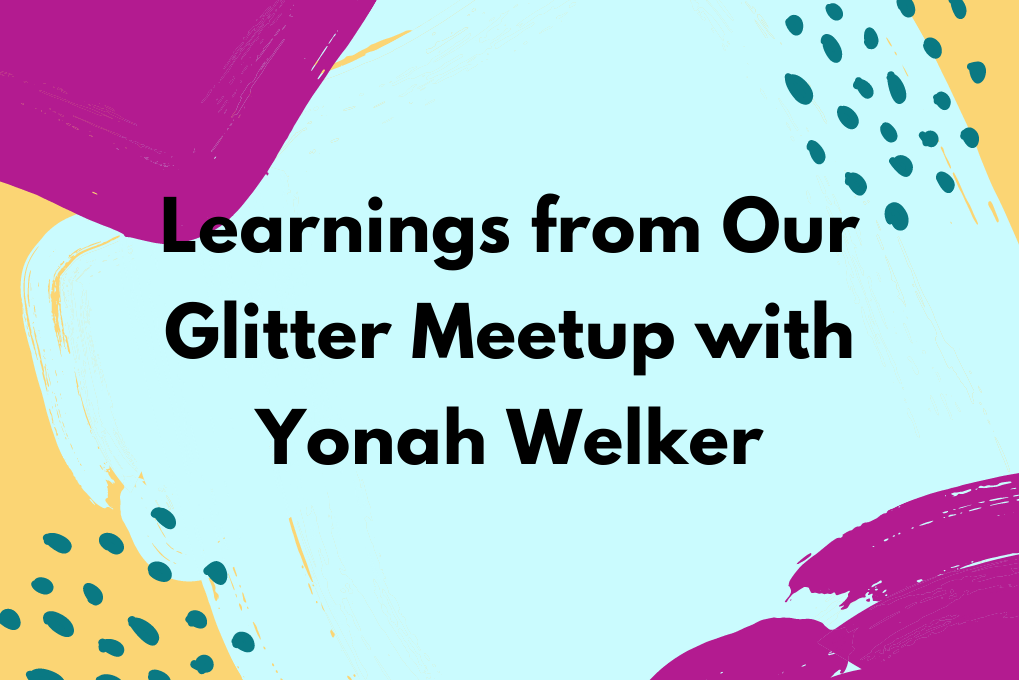Learnings from Our Glitter Meetup with Yonah Welker
Our accessibility lead Karen Reilly recently hosted a Team Community Glitter Meetup featuring special guest Yonah Welker, a neurodivergent scientist working at the intersection of tech, evaluation, policy, and ethics. If you’re interested in joining our weekly Glitter Meetups which frequently cover topics like these, join us on The Mattermost IFF Square.
Innovation in the tech industry is often touted as a key component to solving problems and creating new opportunities for safer spaces online. But, as we gleaned from our most recent Glitter Meetup with Yonah Welker, innovation doesn't happen by accident–it's an intentional process that requires meaningful collaboration from all types of people. While not the sole solution, building inclusive technology can help foster this innovation. This blog post will explore some current projects mentioned in the discussion that involve inclusive technology and how we can make our technologies more accessible for everyone. However, we must steer away from seeing technology as a way to make people act neurotypical. The real goal should be offering solutions that help make work spaces more accessible for everyone.
Benefits of Inclusive Tech
There are many benefits of inclusive tech, including increased economic activity and more diverse talent pools. Only a handful of organizations have been trying out neurodiverse hiring platforms and applicant tracking systems that remove bias from the interview process. Yet, still 90% of people with autism are not employed in tech because they aren’t allowed to compete on an even playing field due to their perceived lack of social skills or experience and algorithmic bias and algorithmic supremacy. Then there’s the added complexity that only 10-15% of female applicants get hired because these biases exist at all levels within the hiring process.
The future of work is changing rapidly, and increasingly being driven by AI. Understanding this, there are some corporate initiatives that acknowledge that people with disabilities need to have access to tools so that work spaces are more accessible to them. Microsoft, for example, has created a 5-year plan, focusing on helping decrease the gap in education, employment, and technology accessibility. Amazon also offers a similar program.
Accessibility is about designing for everyone - not just those who need accommodations or adaptations. It’s about leveling the field. Imagine being physically disabled and needing to use a brainwave interface that can perform functions for you. Eva Lee and Angie C. are two artists experimenting with this. If this type of tech evolves from an assistive technology for only a select few people and is able to scale to help everyone live more fulfilling productive lives, that’s the type of outcome we want.
Building inclusive tech collaboratively can lead to better products, services, and experiences for everyone. For instance, Google Glass collaborated with Brain Power, an autism-focused startup which has developed a technology to help children “see” emotions, and have been incredibly successful in helping children improve social and communication skills. This is in part because of the diversity of skills and expertise on Brain Power’s team, which is composed neuroscience PhDs, medical doctors, former teachers, software engineers, designers, managers, and employees with autism - it has been proven time and time again that diverse teams create better solutions than homogenous ones do by a factor of three. Similarly, some forward-thinking researchers are experimenting with social robots for ADHD and AI trainers for dyslexia that have been developed in partnership with neurodiverse educators and children.
Fortunately, there are a handful of organizations like the ones mentioned in this post that are working towards that direction, but there are more steps we can take to see progress. One of the most important is for organizations to have inclusive applicant tracking systems that allow neurodivergent people with disabilities better access to opportunities.
For the Digital Rights community, starting work on accessibility falls squarely within our ethos and remit. We must begin to do better if we want to ensure that the Internet remains a free and open tool for everyone in the world. While this takes resources, part of the battle is being intentional and educating yourself on best practices. We want to know if any organizations in our space have started down this path, and what their experience has been. Please let us know in the comments.
Yonah Welker’s Research [Official Site]
All posts about Accessibility [Team Community Blog]


